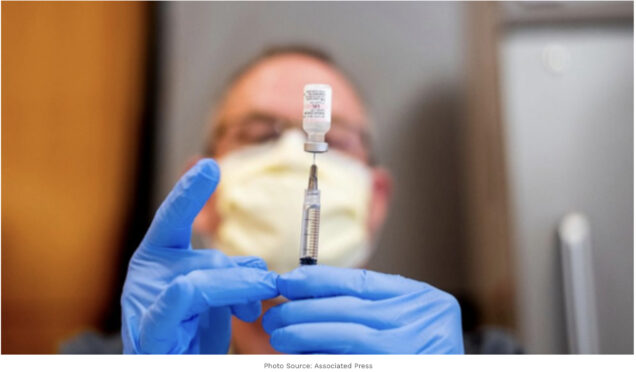January 27 – At present, the number of confirmed cases in California has exceeded 3 million, the highest in the United States.
However, according to US media reports, California frequently faces difficulties in vaccine distribution and vaccination, and is one of the slowest vaccine distribution in the United States.
Newsweek pointed out on the 26th that many hospitals and medical staff in California said that the current vaccine problem has nothing to do with the state’s health care system, but stems from the lack of transparency of the federal government.
“The United States lacks transparency at the national level…While we know how many vaccines should be distributed, it’s not clear how many vaccines actually are available, nor where they are, when, and how they will be distributed,” said Yvonne Maldonado, an infectious disease expert from Stanford University.
California has been facing a severe surge in cases and an increase in hospital admissions recently, the report said.
As of the 25th, the intensive care units in Southern California and San Joaquin Valley areas were full, according to the state health department.” We have been preparing for vaccines since March and April (last year), but no one knows how the federal government will lead distribution and vaccination.” Maldonado said that although it took a lot of money to develop a vaccine, there was little investment in distribution and vaccination.
“It’s difficult to make plans now.” Maldonado said, “The vaccine is likely to be shipped suddenly. People can’t prepare at all, because they can only receive the news one day before the arrival.
The supply chain management is very chaotic, which starts at the federal level.”
David Rubowski, CEO of UC Davis Medical, said that California’s highly dense population, delays in reporting cases and other issues should be considered for vaccine distribution.
He said: “Is California working well? Of course, the answer is no.
Daisy Curtis, director of medicine at UC San Francisco Medical, also said that California’s vaccine supply is “extremely unstable” and that “we need people who understand the supply chain, and I don’t think these people are the government.” She said that although the new government came to power and promised to make changes, “I don’t know what will change.”
“This is not a high-level science, nor is it that healthcare workers and experts are afraid to take responsibility.
This is a simple supply-demand relationship, and people need supplies in the face of a pandemic.” “It’s that simple, and we don’t get supplies,” Curtis said.



